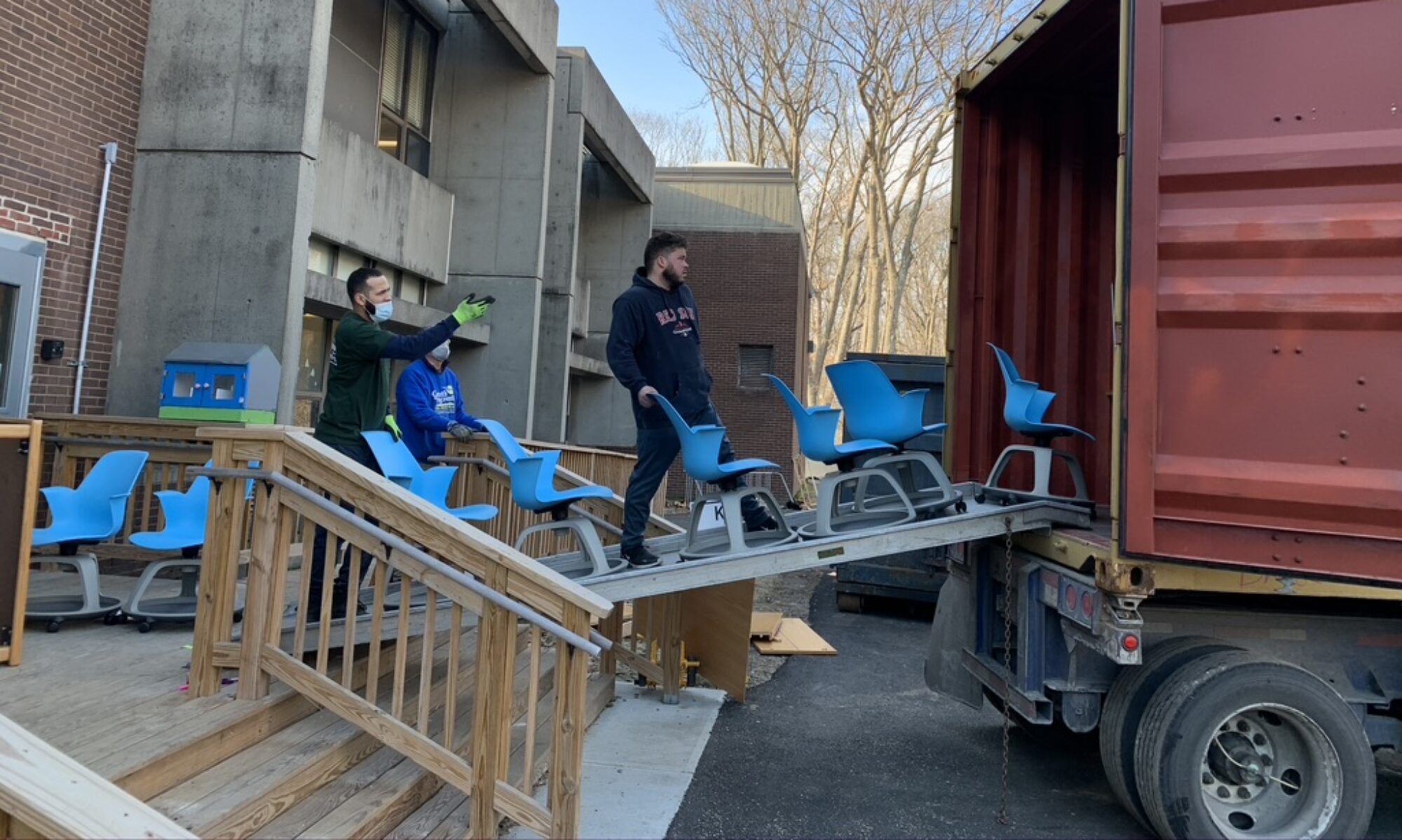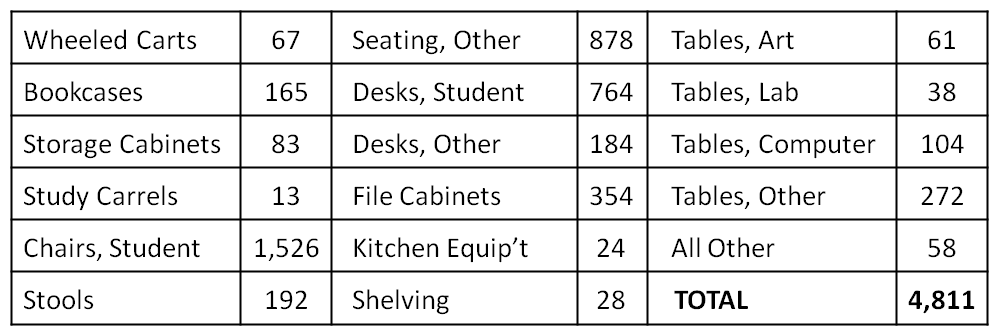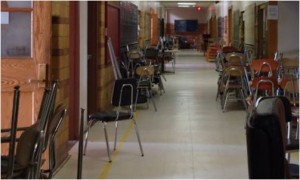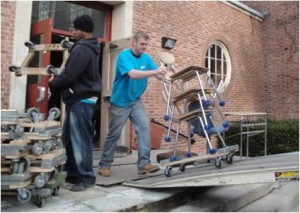Situation: The town of Wellesley, Mass. dedicated a new high school in February 2012. The transition required all furnishings and equipment to be removed from the adjacent, retired school in just four days over winter vacation.
Material Composition: The entire furnishings of a 1,350 student high school, including classrooms, administrative areas, libraries, science labs, kitchen, cafeteria, and athletic facilities.
Quantity: 4,811 pieces, including boxed supplies in addition to furniture and equipment.
Setting: Suburban streets, residential neighborhood.
Click here for a printable PDF of this case study.
OVERVIEW
Wellesley, Mass. is a suburban community, population 28,000, about 20 miles west of Boston. In February 2012 the town finished construction of a new high school, built in the parking lots of the existing facility. The new school received almost all new furnishings, leaving nearly 5,000 pieces of surplus in the old edifice. The town was committed to assuring the old furniture was reused, but there was only a four-day window between students moving out and demolition crews arriving on site.
SETTING
The high school complex is situated in a residential area of small streets without near access to truck routes. The old school was engulfed on two sides by the new structure, severely restricting access. Access and staging options were further limited by the fact that the new school occupied nearly all former parking areas. There was no loading dock; there was one small passenger elevator; items needed to be hand carried to multiple egress points; and there were long carries to locations where trailers could be parked.
COMPOSITION
KEY CONCERNS
Project Size and Schedule: This was a very large move, which ultimately filled 21 completely packed tractor trailers plus several smaller box vans. All of these needed to be scheduled to arrive on site, packed, inventoried, and dispatched within four working days. Because of the residential location, work hours were limited to 7:00AM-4:00PM.
Trucking and Logistics: Needing to fill as many as eight trailers a day to meet the schedule, it was critical that trucks were managed to arrive on schedule, and to build in contingency plans against unanticipated delays.
Access: There were long carries within the building, three floors with no elevators, difficult egress through small doors (frequently with interior or outside stairways), and long outside carries to trailers.
Onsite Management: With multiple access points, and trailers being loaded simultaneously, it was necessary to set up multiple crews, some inside emptying the facility, others outside loading and packing trailers, and balance work flows to keep trailers filling on schedule.
Implementation
IRN completed the project in three days, a full day ahead of schedule. We organized some 30 movers into flexible crews working out of three access points, with an IRN project manager at each location. Prior to the start date, we identified and planned how to work around potential choke points. We also identified all items that needed to be knocked down or disassembled, and assigned labor and tools to assure that this happened without affecting the project schedule. We reassigned labor on the fly to keep trailers filling and moving from the site.
Logistics were managed out of IRN’s home office. With the project nearly complete on Day 3, we packed the last furnishings into box vans and sent them to our mover’s warehouse, so we could return the site to the town’s project manager. We then redirected the final (Day 4) long-distance trailers and loaded them from the warehouse.
With so many trucks coming and going, coordination with police and school authorities was critical. The Wellesley police provided essential assistance in directing trucks and preventing tension with residents. As a thank-you, we were able to provide the police with several dozen much needed pieces of furniture for their own offices.
DESTINATION
The Wellesley furnishings were sent to Food for the Poor’s central Caribbean warehouse in Spanish Town, Jamaica. From there they are being distributed to multiple projects throughout the Caribbean basin.
COST
The major costs for this project were labor and long-distance trailers for the surplus. No matter how the surplus was disposed of, it needed to be removed from the school, so labor was a fixed cost. Planning for dumpsters to haul the surplus for disposal, Wellesley faced a cost of about $60,000 to throw its surplus away. The cost for reuse through IRN was nearly 25% less. In other words, Wellesley gained the social and environmental benefits of reuse, and provided disadvantaged communities with desperately needed school furnishings, at a cost to Wellesley that was $14,000 LESS than the cost of sending the old school furniture to landfill.




